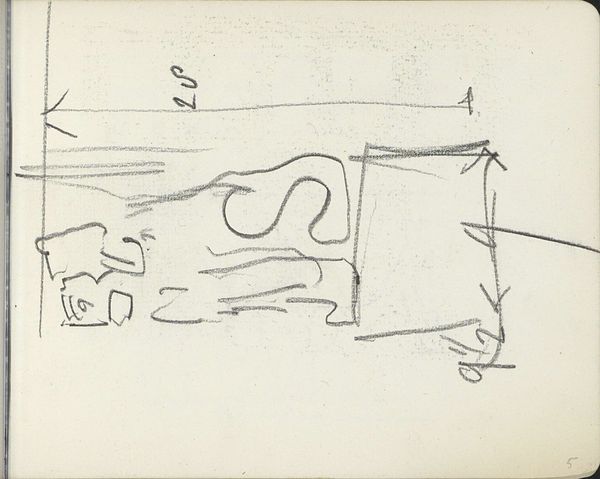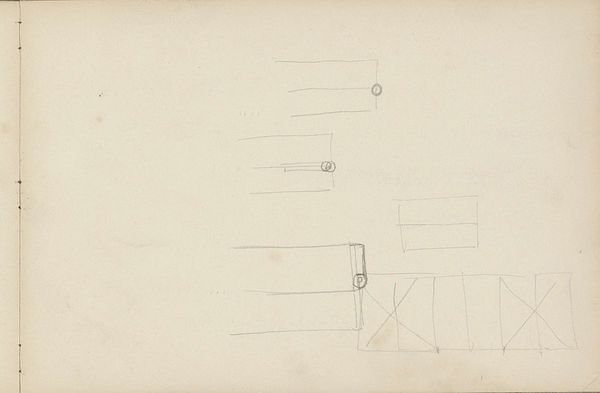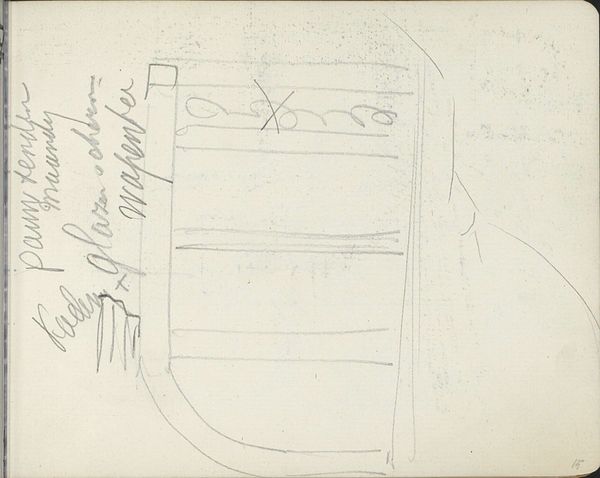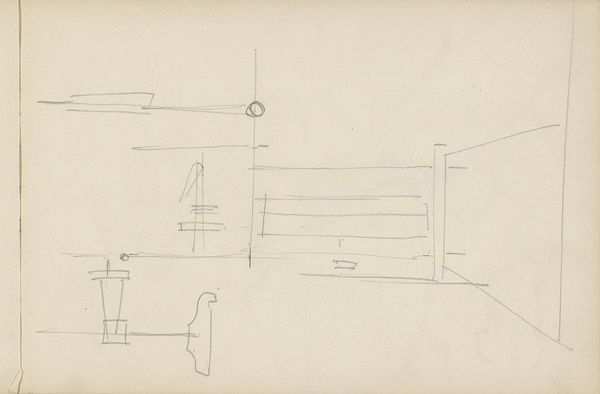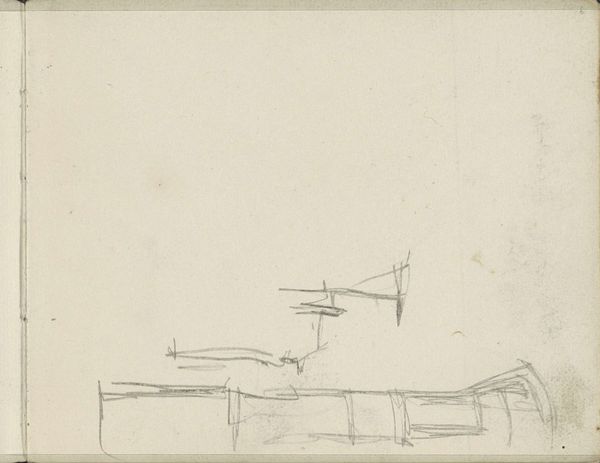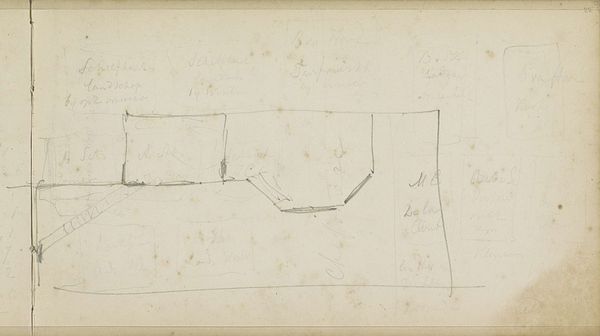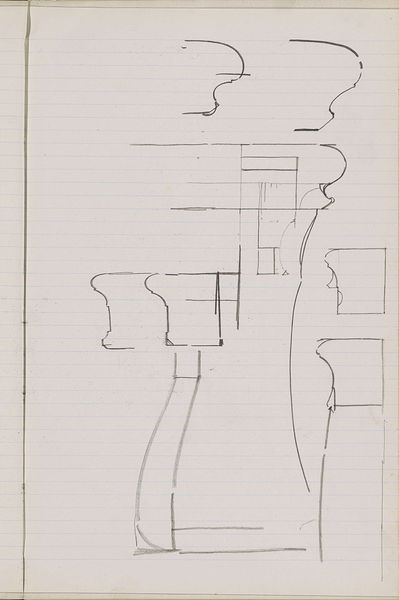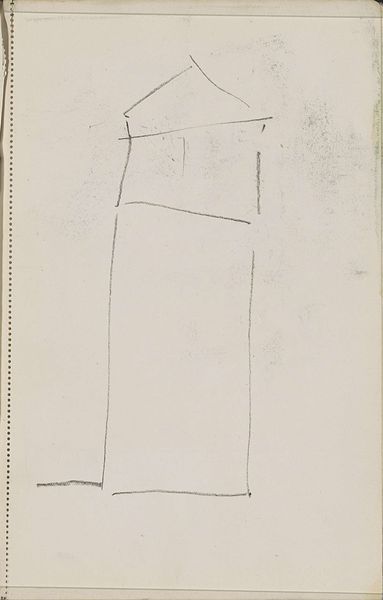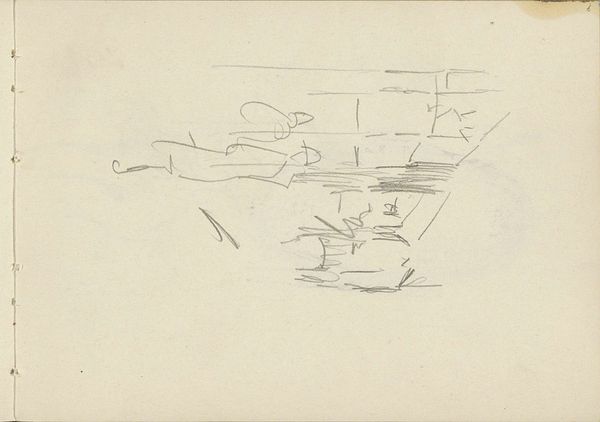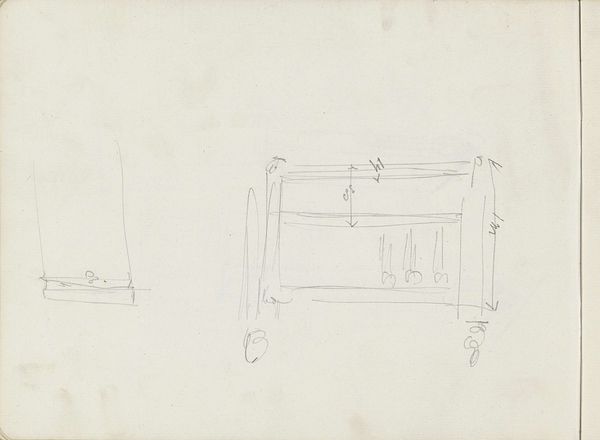
drawing, pencil
#
art-deco
#
drawing
#
amateur sketch
#
pen sketch
#
furniture
#
hand drawn type
#
personal sketchbook
#
idea generation sketch
#
ink drawing experimentation
#
pen-ink sketch
#
pencil
#
sketchbook drawing
#
sketchbook art
#
initial sketch
Copyright: Rijks Museum: Open Domain
Curator: Here we have a preparatory sketch entitled “Ontwerp voor een meubel,” or “Design for Furniture,” by Carel Adolph Lion Cachet, created around 1928. It's currently held at the Rijksmuseum. Editor: It strikes me as quite unassuming at first glance – almost secretive, a private moment captured in pencil and ink on what appears to be a page torn from a sketchbook. Curator: Exactly! Let's consider the materials. It seems to be a quick study in pencil and perhaps ink. Notice how the lines vary in thickness and pressure, suggesting Cachet was exploring different forms and joinery techniques. It speaks to the early stages of design, a fascinating insight into the crafting of art deco furniture. Editor: The medium is important: this isn't just about aesthetic preference. Cachet’s choice to sketch—implying an accessibility to material for all to participate—brings it back to design as an act performed by one laborer thinking about how furniture intersects in people's daily life within a specific economic moment of postwar reconstruction. Who would ultimately produce, distribute, and use furniture of this period? Curator: A crucial question. Also, what are the dimensions? The numerical notations seem related to potential size of material needed in the end for the production line and also what it signifies to have affordable well crafted furniture versus luxurious unique designs. Editor: Yes, and those very faint Art Deco lines evoke a longing for modernity within an era that just lived throughout the First World War. The sketch itself becomes a form of resistance. Curator: I hadn't thought of it that way. I was mainly considering it in terms of function and mass production possibility, that is its importance today given mass consumption rates. Editor: Well, looking closer, it’s in its initial creation, a design for the people—reflecting desires and possibilities within the period of Art Deco. I think ultimately both viewpoints converge! Curator: A vital reminder of the complexities embedded even in seemingly simple sketches of that era. Thanks for pointing that out. Editor: Likewise; each line, a product of many hands that will one day produce this work or something else entirely, but based upon this generative idea!
Comments
No comments
Be the first to comment and join the conversation on the ultimate creative platform.
